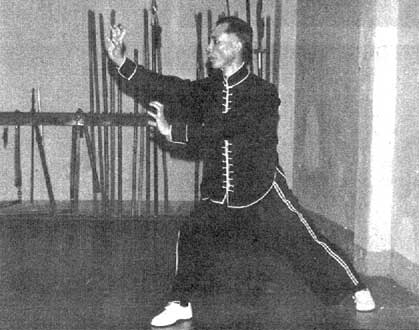Choy Lei Fat
Originated in the South of China, this style was founded by Chan Heung (Chen Xiang) around the 19th Century. Chan Heung was born in 1806 in the small village of King Mui, in the Sun Wui province, Chan Heung began his training with his uncle, Chan Yuen Wu, who had been a student of the monks in the Fukien (Fujian) monastery. His uncle trained him for ten years.

When he was 17, his uncle presented him to Master Li Yau San (Shan), who had also been a student at the Fukien monastery and who had been the heir of the knowledge and skills of Li Shi Kai (Li Yau Shan) a monk who represented the Li Gar style and who had been one of the survivors of the destruction of the Shao Lin monastery in 1736.
After five years of studies with Li Yau San, Chan Heung was introduced to Choy Fok, a monk who had been one of the survivors of the destruction of the Fukien monastery. Chan Heung was accepted as a student and with Choy Fok he learned Buddhism, meditation, traditional medicine, chi kung and the Fukien martial arts techniques. In a demonstration of power, the Choy Fok asked Chan Heung to kick and dislodge a large stone. Chan Heung went even further and split the stone into two parts each weighing more than 100 kilos (200 pounds). Returning to his home town, Chan Heung recollected all the learning he had acquired during 23 years and created one unique style. The name of this new style has its origin in the last names of his masters: Choy (Choy Fok) and Li (Li Yau San) and the word Fat (Buddha) was added to pay homage to the Shao Lin monks responsible for the development of the various Chinese martial arts styles. Chan Heung opened a school and along with it he also opened a medical center to treat the people of that region who could not afford treatment otherwise.
There are two branches of the Choy Li Fat school: Hung Sing (Xiong Sheng), the original branch promoted and practiced by Chan Heung throughout the world today and Bak Sing (Bei Sheng), modified by Chan On Par (Chen An Bai) and which gained fame in the 20's through Tam Sam (Dan San).
Choy Li Fat is composed of combined movements; of strong and short kicks and punches that sometimes occur simultaneously. A unique characteristic of Choy Li Fat are the low bases and the highly effective and objective attack and defense techniques. The Hung Sing style has 10 freehand forms and Bak Sing has three. The weapons of the style are: the staff, fisherman staff, broadsword, butterfly knives, trident, san tchi kwan (three section stick), fan, gan and bench.
